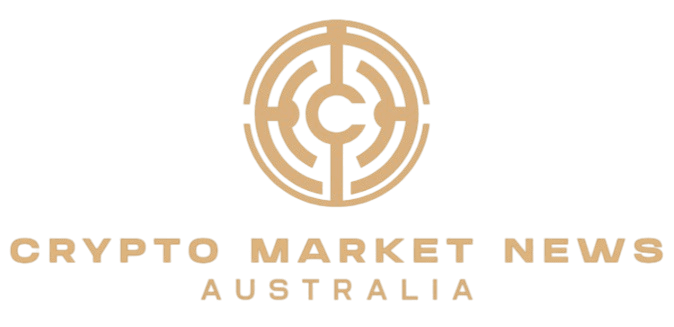The Australian Securities and Investments Commission (ASIC) has been working to target greenwashing regarding crypto exchange-traded funds (ETFs). Over a 15-month period leading up to June 30, 2024, ASIC made 47 regulatory interventions.
ASIC is making crypto news because it continues to prioritize and target greenwashing, and there are more enforcement actions expected to be on the horizon. What is greenwashing and what are the key findings from these interventions? Let’s take a deeper look.
What is Greenwashing?
To make things simple, greenwashing is a specific marketing tactic where a company portrays products, practices, or services in a manner that implies environmental responsibility where less (or none) is the reality.
Greenwashing not only makes outright misleading claims – like being “eco-friendly” – but also proclaims exaggerated benefits to using those products or services. Moreover, greenwashing makes false promises or claims about potential environmental improvements while never showing a clear timeline or action plan to make those changes a reality.
It is simply deceptive marketing when it comes down to it. Greenwashing can and often does emphasize environmentally friendly trends and actions that divert attention away from actions that are less environmentally friendly. Marketing tactics include using “green” labels, imagery, or language to create a sense of sustainability that is patently false.
Key Findings from ASIC Interventions
Among the 47 interventions made by ASIC from the 2023-24 financial year, Report 791 outlines a few areas of concern from the Commission. These are the most important findings from the report:
Underlying Investments That are Inconsistent with ESG Screens and Policies
ASIC made note of a variety of cases of the underlying investment funds that didn’t align with disclosed ESG investment screens or policies. In those instances, ASIC pursued civil proceedings, identifying a mismatch between investments held and ESG investment objectives and screens.
ASIC, during this time, finalized the first civil penalty proceeding related to greenwashing. It obtained a $11.3 million penalty against Mercer Superannuation and has since penalized Vanguard $12.9 million in civil penalties.
Claims of Sustainability without Reasonable Grounds
ASIC noted that there were several instances where claims related to sustainability were made but didn’t appear to be based on ‘reasonable grounds.’ Representations were made on websites, on promotional materials and market announcements, and in prospectuses.
ASIC recommends that, in order to avoid greenwashing, any sustainability-related information should have backing and use language that ensures sufficient investor understanding. Most of all, it should be data-driven and accurate.
Lack of Disclosure Pertaining to ESG Investment Screens and Methodologies
ASIC found that there were instances where the overall scope of the investment screens or methodologies was ambiguous or vague. Inadequate information was disclosed to investors, making it difficult for them to understand any potential qualifications, exceptions, or limitations.
ASIC also obtained corrective disclosure outcomes for a number of specific instances. Things like an explanation of the ESG scoring process, clarification of a fund’s exposure to fossil fuels, clarification of the investment screening process in both AIB and PDS, and so much more.
Guidance on Greenwashing
Much of the media commentary and discussion on greenwashing has been in regard to enforcement taken by ASIC against those organizations and entities that have been openly misleading stakeholders or investors. Less discussion, sadly, has taken place about what can be done to prevent greenwashing.
ASIC released its report, Report 791, and gave recommendations as well as good practice examples to organizations in order to prevent potential instances of greenwashing. Here are some of the most relevant examples.
ASIC suggest that entities who are voluntarily disclosing climate-related metrics to consider disclosure agreements that have been previously set out by the Australian Sustainability Reporting Standards.
It has also been recommended by ASIC that entities work to verify investments so as to provide consistency against disclosed investment strategies. Those entities should also ensure that they have taken sufficient steps to confirm that they have become verified and are consistent with claims made about those investment strategies in order to avoid being misleading to investors.
ASIC recommended that the criteria used for screening positive investments be provided to any potential investors. Those screenings include explaining terms clearly that would have otherwise been ambiguous or vague, while also indicating whether those screens are absolute or threshold based.
When it comes to green bond issuance, ASIC notes that they should ensure that investors aren’t being misled regarding plans for the allocation of funds from the bond issues, or the nature of the projects that will be funded by those proceeds.
Focus Areas of Report 791
As comprehensive as the report is, it sets out to focus on a plethora of other areas based on entity type. These entities include the following:
Issuance of Green Bonds or Loans Linked to Sustainability
ASIC recommends to avoid any ambiguity when it comes to the disclosure of the potential use of proceeds while also ensuring that the disclosure aligns with those intended use of proceeds as well.
Superannuation Entities
The goal is to ensure that adequate explanations are provided when it comes to screening or exclusion criteria. This includes an explanation of terms that are used in the threshold or screening process that could be ambiguous, vague, or have definitions that are differently accepted.
An interesting note from Report 791 is it found that nearly all superannuation funds that made claims or sustainability or used screens will require “uplifts” in their disclosures. It is also possible that these entities may attract future attention from ASIC.
Responsible Entities
Those entities found responsible will need to take adequate steps to ensure that any investments made by managers or sub-managers are independently and competently verified as being totally consistent with any claims made regarding the sustainability strategies of the fund.
Reviews made by ASIC may be completed by an independent risk or compliance function. A third party independent to the investment manager may also be used; that will be determined on a case-by-case basis.
Listed Companies
All companies, particularly those small cap ASX listed companies that fall outside the ASX 200, are advised to consider the good practice examples and recommendations set forth by the Report regarding sustainability-related disclosures.
An emphasis is put on reports or claims when it comes to climate-related targets and claims. Be informed by disclosure requirements set out through the Australian Sustainability Reporting Standards. Be sure that there is a clear understanding of sustainability terms and be sure that this information is explained clearly to investors.
Finding More Information
There is a lot of information to digest from Report 791 and it can feel a bit overwhelming. For organizations looking to clarify and strengthen their environmentally friendly claims, it is important to have access to as much information as possible. Better understanding what greenwashing is and how it is a potentially slippery slope is a good place to start.
Read up on instances like the RG 65 Section 1013DA disclosure guidelines, RG 168 Product Disclosure Statements, RG 234 Advertising financial products and services: Good Practice Guidance, and other materials.
The information sheet provided by ASIC is meant to provide basic guidance and information on the subject. Relevant law surrounding “green” marketing is a bit more comprehensive, and it is always a good idea to have legal assistance.

